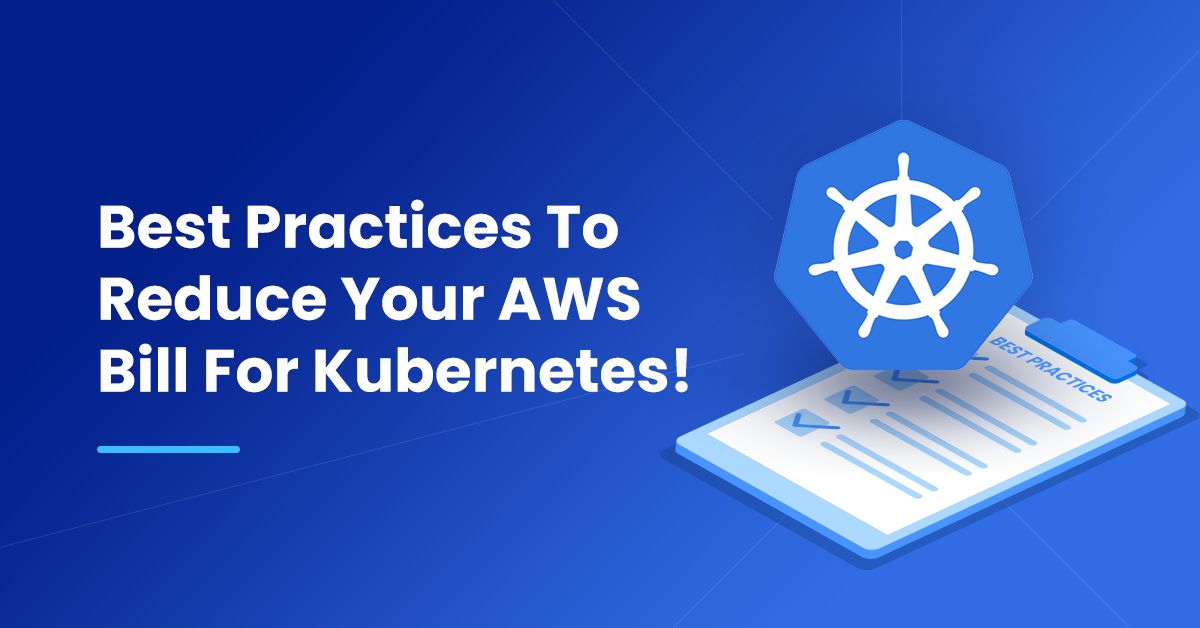In recent years, the popularity of Kubernetes has grown exponentially due to its ability to effectively manage containerized workloads. It is a powerful tool that has enabled organizations to quickly and efficiently deploy applications to the cloud. However, with the power of Kubernetes, there comes a potentially high cost, as many organizations find themselves overspending on their cloud bills when using the service.
This blog is intended to help organizations reduce their AWS bills for Kubernetes by providing best practices for optimizing their cloud architecture, monitoring their billing, and leveraging cost-saving features. By implementing these best practices, organizations can reduce their cloud bills and maximize their return on investment. Read on!
What Are The Best Practices For EKS Cost Management?

1. Understand your Cloud architecture
The first step to reducing your AWS bill for Kubernetes is to understand your cloud architecture. This means having a clear understanding of the services you are using, how they are connected, and how they are being used.
Knowing your cloud architecture will help you identify potential cost-saving opportunities. For example, you may realize that some of your services are not being used to their full potential, which means you could reduce their costs or even eliminate them entirely.
Additionally, understanding your cloud architecture will help you identify areas of potential improvement. For instance, if you find that certain services are not being used as efficiently as possible, you can adjust their settings to make them more efficient and reduce your costs.
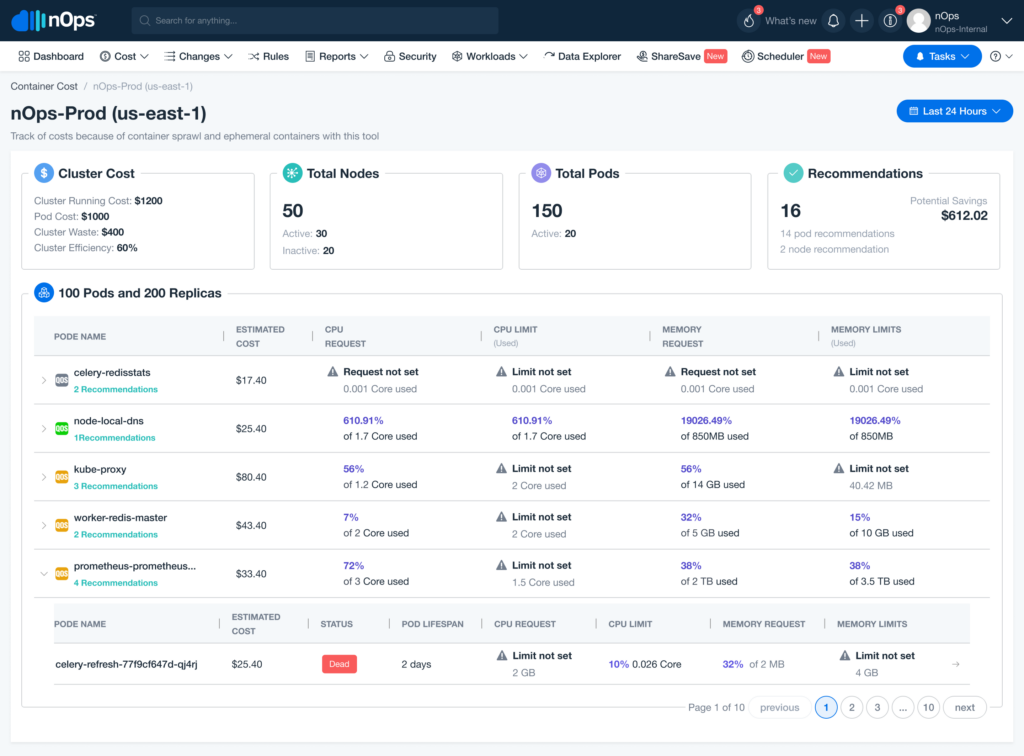
With nOps, you can easily visualize your entire EKS infrastructure, identify cost optimization opportunities, and make informed decisions to reduce cloud spend.
2. Establish and monitor billing alerts
The second step to reducing your AWS bill for Kubernetes is to establish and monitor billing alerts. This means setting up notifications that will alert you when your bills exceed a certain threshold.
By monitoring your bills, you can identify areas of potential overspending and take corrective measures. For example, if you find that you are consistently exceeding your budget for a particular service, you can reduce its usage or switch to a less expensive alternative. Additionally, billing alerts can help you identify unexpected costs. This will allow you to take advantage of cost-saving opportunities that you may have otherwise missed.
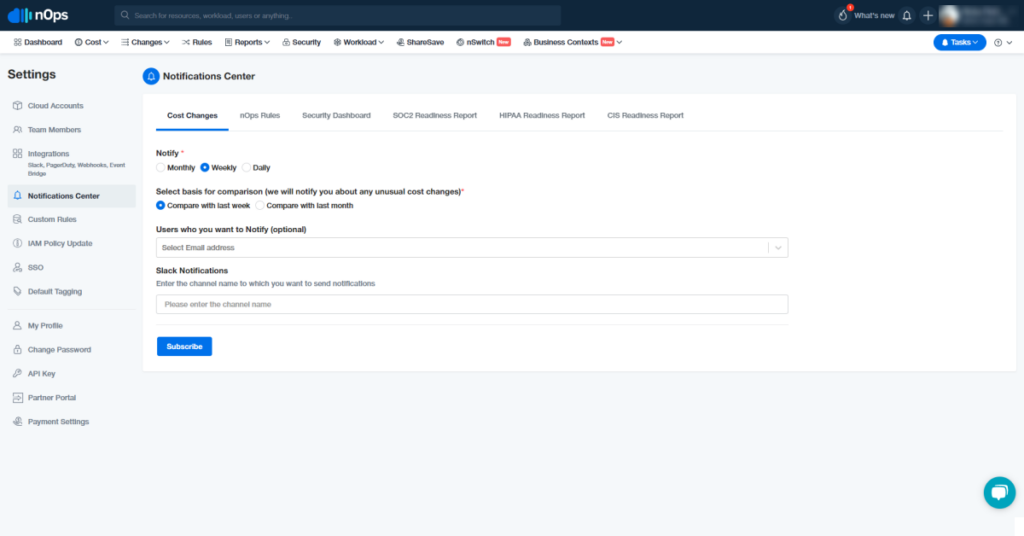
nOps not only provides efficient EKS cost optimization but also offers comprehensive reports and alerts to ensure complete visibility of your cloud resources. With nOps, you can proactively identify cost-saving opportunities, avoid potential cost overruns, and make informed decisions to optimize your infrastructure.
3. Evaluate your Kubernetes services
The third step to reducing your AWS bill for Kubernetes is to evaluate your Kubernetes services through data analysis. This involves tracking resource utilization, identifying idle resources, and optimizing resource allocation to reduce waste. By analyzing your Kubernetes data, you can make informed decisions about where to make changes that will result in cost savings.
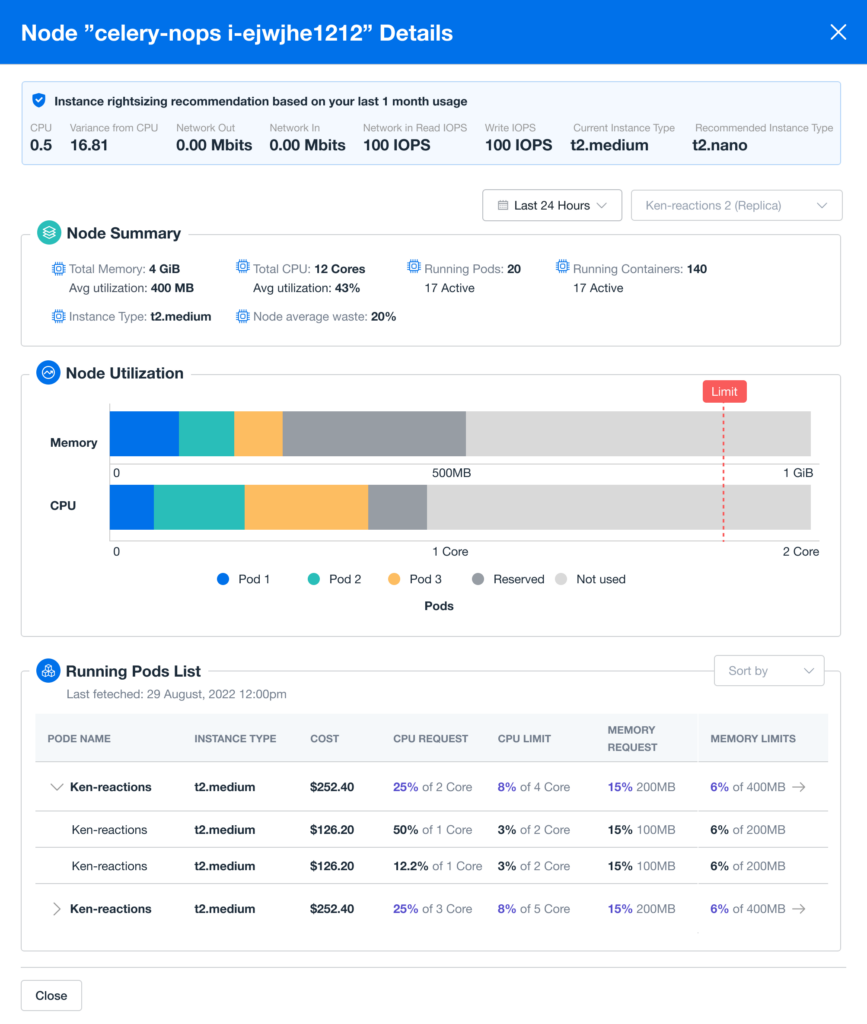
With nOps, you can easily identify areas where resources are being underutilized, optimize resource allocation, and track the impact of changes on your AWS bill. By leveraging nOps’ data analysis capabilities, you can take a proactive approach to manage your Kubernetes costs and maximizing your savings.
4. Use Reserved Instances
The next step to reducing your AWS bill for Kubernetes is to use reserved instances. Reserved instances are a cost-saving feature that allows you to purchase compute capacity ahead of time at a discounted rate.
By purchasing reserved instances, you can significantly reduce your costs by locking in a lower rate for your computing capacity. Additionally, you can avoid unexpected costs by knowing exactly what you will pay for your computing capacity in advance.
You can explore the details of reserved instances at The Ultimate Guide To AWS Reserved Instances!
5. Utilize Spot Instances
Another best practice for reducing your AWS bill for Kubernetes is to utilize spot instances. Spot instances are a cost-saving feature that allows you to bid on unused compute capacity at a discounted rate. Additionally, you can avoid unexpected costs by knowing exactly what you will pay for your computing capacity in advance.
When selecting spot instances, opt for the less popular ones as they have a lower chance of being interrupted. You can assess the interruption frequency for the selected instance in the AWS Spot Instance Advisor, which provides a range of <5%, 5-10%, 10-15%, 15-20%, and >20%.
Furthermore, if you’re looking for an uninterrupted experience, you can choose the 6-hour spot instance, which will cost you a bit more, but still provide a 30-50% discount from the on-demand pricing.
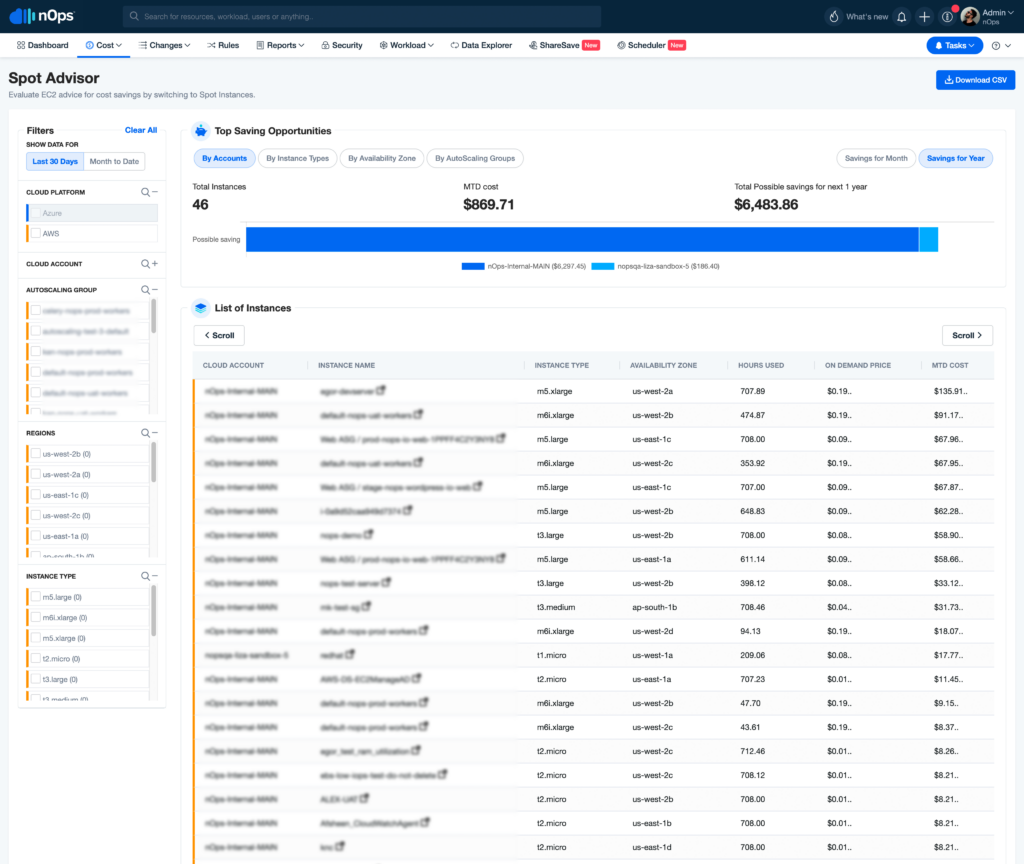
Spot instances can be challenging to manage due to their volatile nature and potential for unexpected termination. However, nOps provides a solution by monitoring and analyzing spot instance usage in real time, enabling users to optimize their utilization while minimizing downtime and costs. With nOps, users can gain better control over their spot instance management and ensure their workloads are always up and running.
6. Educate your team on EKS cost management
One of the best steps to reducing your AWS bill for Kubernetes is to educate your team for EKS cost management. It is important that all members of your team understand the best practices for reducing your cloud bills and are aware of the various cost-saving features available.
By educating your team, you can ensure everyone is making the most of your cloud architecture and taking advantage of cost-saving opportunities. Additionally, this will help ensure that your team is taking a proactive approach to managing your cloud bills, rather than reacting to unexpected costs.
How Can nOps Help With EKS Cost Management?
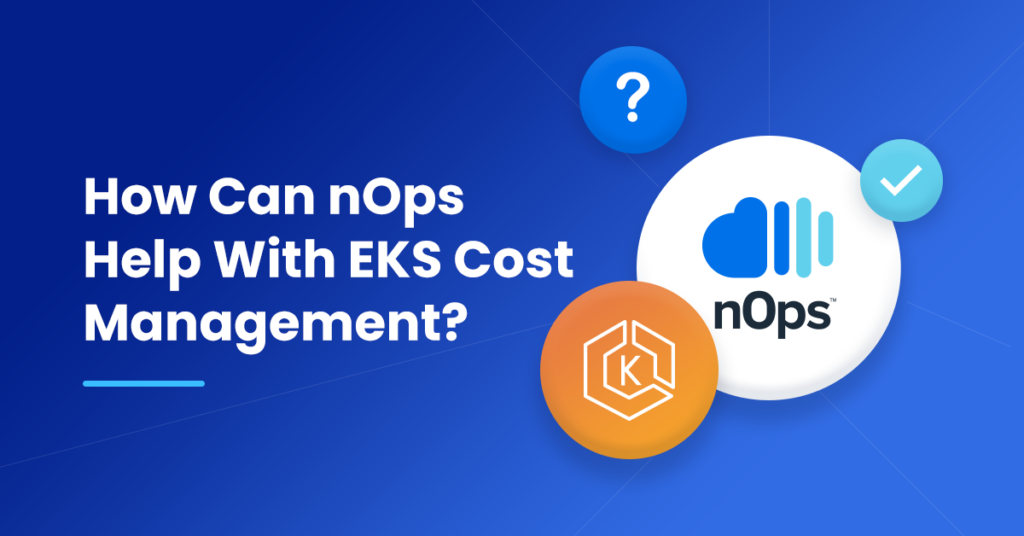
nOps Kubernetes Cost Allocation & Optimization Solution delivers deep, comprehensive, real-time analysis and costs insights to maximize cost benefits with minimal interruption.
- nOps provides Cluster node insights so that users make decisions about how to tune instance type selections. You can quickly look at average node utilization over time and prioritize the actions based on either cost impact or the largest rightsizing opportunities.
- We collect and aggregate by labels or drill into specific pod replicas or containers to see how they contribute to cost or create waste. These insights allow the team to make decisions about profiling, load testing, and tuning based on impact. Both pod and node-level insights can be sorted by cost, RAM, or CPU utilization, making it extremely simple to prioritize optimization based on opportunity and impact.
- nOps pod recommendations give you the exact parameters to tune your pod resource requests and limits confidently. Keeping your pods tuned eliminates waste in your cluster by freeing up space for pods to scale on existing cluster nodes — and helps your team with immediate benefits of very low overhead.
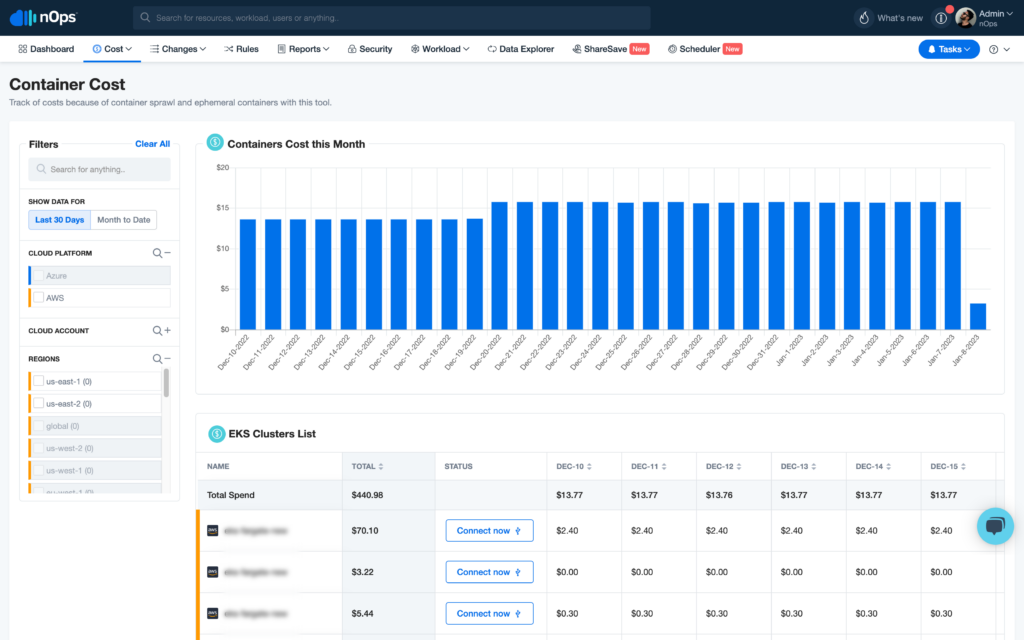
Your team focuses on innovation, while nOps runs optimization on auto-pilot to help you track, analyze and optimize accordingly! Our customers can benefit in two key ways:
- First, pay less for what you use without the financial risk.
- Second, use less by automatically pausing idle resources.
Let us help you save! Sign up for nOps today.

